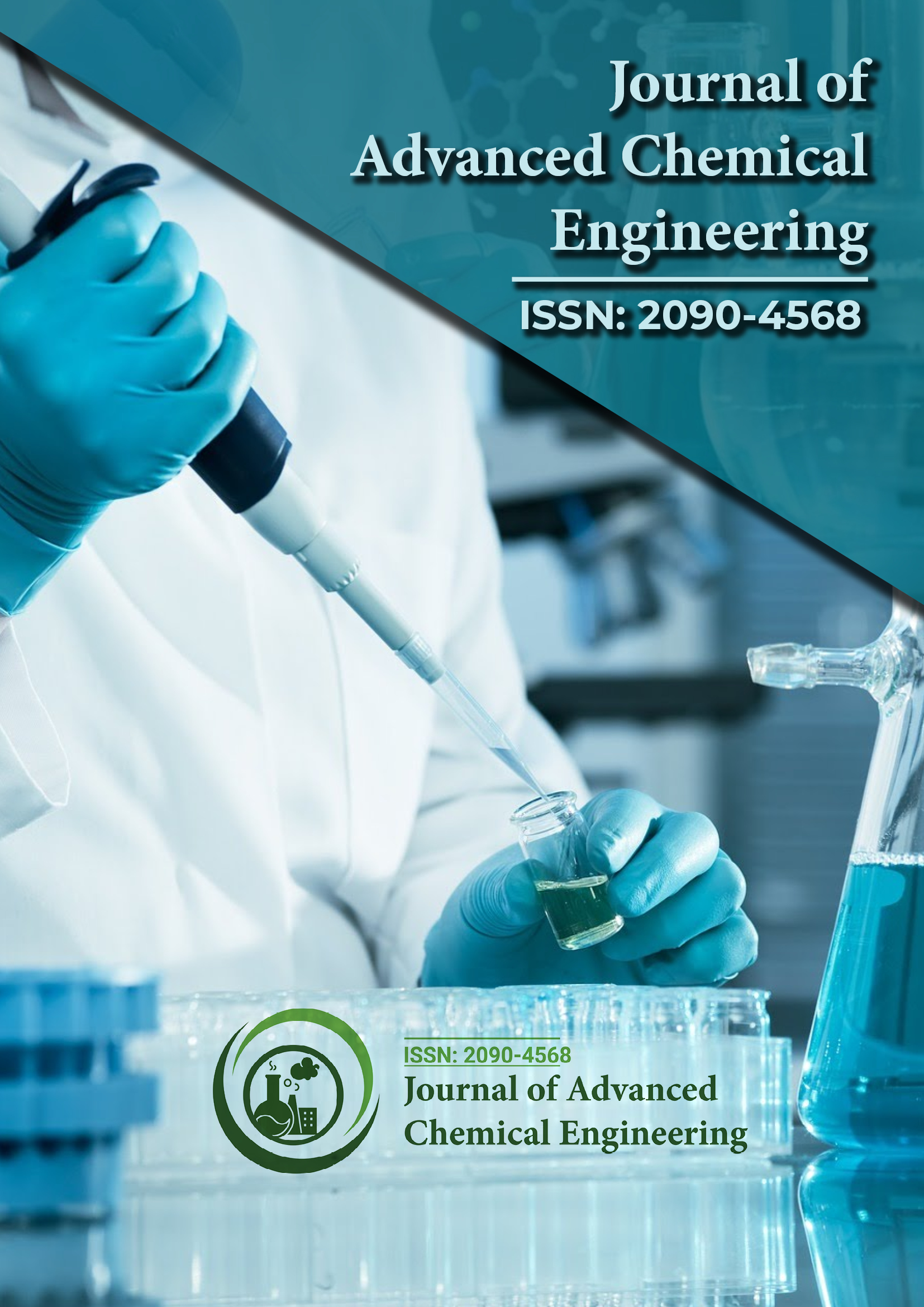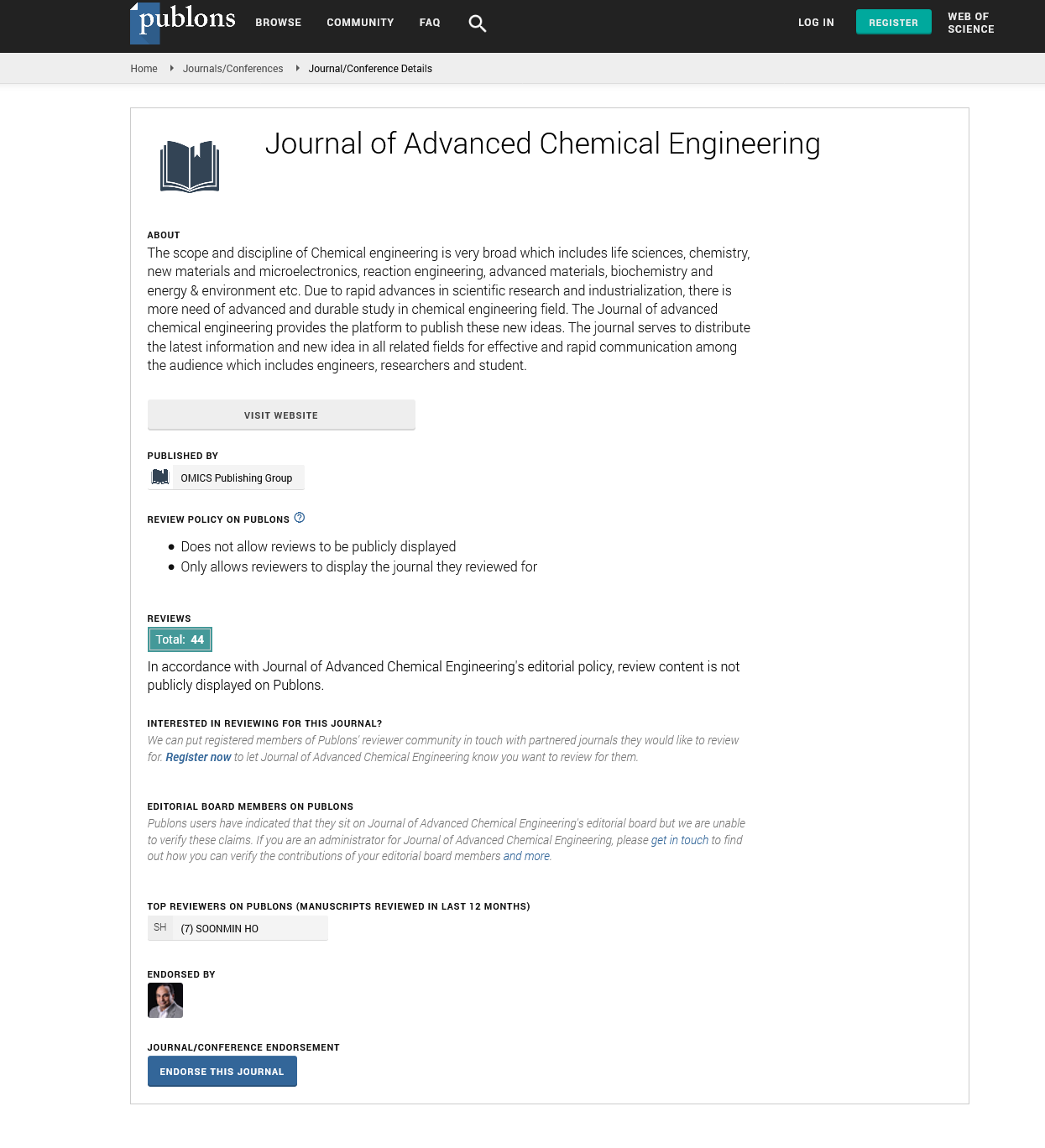Indexed In
- Open J Gate
- Genamics JournalSeek
- Smithers Rapra
- RefSeek
- Directory of Research Journal Indexing (DRJI)
- Hamdard University
- EBSCO A-Z
- OCLC- WorldCat
- Scholarsteer
- Publons
- Geneva Foundation for Medical Education and Research
- Google Scholar
Useful Links
Share This Page
Journal Flyer

Open Access Journals
- Agri and Aquaculture
- Biochemistry
- Bioinformatics & Systems Biology
- Business & Management
- Chemistry
- Clinical Sciences
- Engineering
- Food & Nutrition
- General Science
- Genetics & Molecular Biology
- Immunology & Microbiology
- Medical Sciences
- Neuroscience & Psychology
- Nursing & Health Care
- Pharmaceutical Sciences
Commentary - (2022) Volume 12, Issue 3
Performance and Operation of Crude Oil Distillation Unit
Sandhya Bayya*Received: 02-Mar-2022, Manuscript No. ACE-22-16330; Editor assigned: 04-Mar-2022, Pre QC No. ACE-22-16330(PQ); Reviewed: 18-Mar-2022, QC No. ACE-22-16330; Revised: 21-Mar-2022, Manuscript No. ACE-22-16330(R); Published: 28-Mar-2022, DOI: 10.35248/2090-4568.22.12.219
Description
In a refinery, the crude oil distillation unit (CDU) is important, and retrofitting a crude oil distillation unit is more usual than building a new one due to the high investment cost. The PRO/II process simulation system is used to create a rigorous model for the crude oil distillation unit, which is based on the traditional two-furnace and three-column refinery process flow and tackles both the distillation columns and the heat exchanger network (HEN) at the same time. The impact of crude oil characteristics on product yield, heat removal pump rounds, heat exchanger network design, and CO2 emissions in crude distillation units is investigated. Furthermore, improvements in energy efficiency for crude oil distillation units are recommended, taking into account light and heavy crude oil.
The Crude Distillation Unit (CDU), also known as the Atmospheric Distillation Unit, is the initial processing equipment through which crude oil is passed in petroleum refining. The distillation process separates crude oil into broad categories of its component hydrocarbons, or "fractions," which serve as feed stocks for all other processing units at the refinery. Crude oil is made up of a mixture of hydrocarbons, and the distillation process separates this crude oil into broad categories of its component hydrocarbons, or "fractions," which serve as feeds tocks for all other processing units at the refinery.
The crude is heated to a temperature between 215°F and 280°F (100°C-137°C) as it is fed into the crude distillation unit. This allows salts to be removed from the desalter, which can be hazardous and caustic to some equipment. As the desalted crude is fed into the atmospheric distillation tower, it is heated to temperatures of up to 750°F (400°C), where the vapors and liquids separate based on the differing temperatures at which they condense. The oil would thermally crack, or break apart, at temperatures exceeding 750°F, impeding the distillation process.
Lighter hydrocarbons condense at the top of the distillation tower, whereas heavier hydrocarbons condense at the bottom. These hydrocarbons are then transported out of the tower via various streams at various heights and transferred to other refinery units for additional processing or blending. The heaviest hydrocarbons that do not evaporate are pumped to the vacuum distillation unit from the bottom of the atmospheric tower. A preheat train, a pre-flash unit, and an atmospheric distillation unit are typical components of a system. In a crude oil distillation system, pre-flash units provide options to lessen the demand for fired heating. The goal of this project is to provide a novel design strategy that will improve production while lowering energy usage and operational costs. Existing design techniques make it impossible to optimize crude oil distillation systems with pre-flash units in a systematic way. As a result, a systematic strategy is provided that takes advantage of interactions between separation units and the heat recovery system while maintaining product quality. The optimization framework uses a stochastic optimization technique to choose optimal values for operational variables such as stripping steam, pump-around duty, pump-around temperature decreases; column feed input temperature, and pre-flash temperature. Integration of modeling and optimization is made easier with an interface between Aspen HYSYS v8.6 and MatLab R2016a. To account for the impact of operational variables on energy consumption, heat recovery is systematically examined using pinch analysis.
Citation: Bayya S (2022) Performance and Operation of Crude oil Distillation Unit. J Adv Chem. 12:219
Copyright: © 2022 Bayya S. This is an open-access article distributed under the terms of the Creative Commons Attribution License, which permits unrestricted use, distribution, and reproduction in any medium, provided the original author and source are credited.

